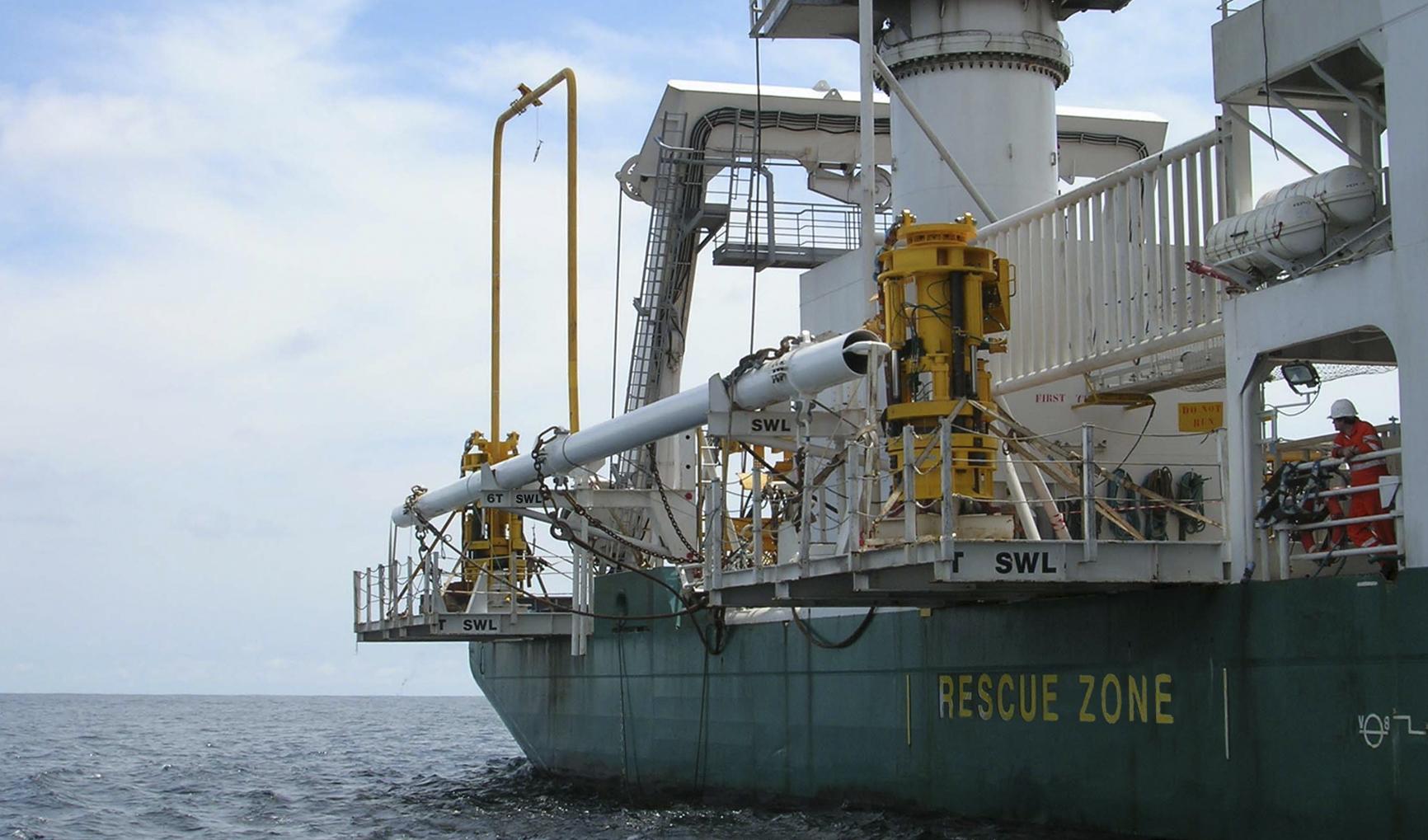
Over 100 jumpers connections for the Vissolela!
This past summer, the Vissolela, an MPSV with the BOURBON fleet, surpassed its 100th subsea connection operation. We look back on her performance with Lukas Kaziak Offshore Manager, and Guillaume Goutel, Captain of the Vissolela.
A jumper in Block 15 is a pipe measuring 20 to 30 m long by 10 to 15 m tall, weighing between 15 and 23 tons, and is used to connect the wellhead to the collector. The hydrocarbons are sent to the collector at the surface platform by pipelines. This element is the final link enabling production, once drilling is complete. It's an operation on the critical path to generating revenue for our clients. "Since July 2004, it's been an average of one successful connection without any call-backs or failures every 40 days, quite a performance!” stresses Lukas Kaziak.
"When a client like Esso entrust us with over 100 operations, it shows us the total confidence they have in our teams and in the quality of our work."Guillaume GoutelCaptain of the Vissolela
Several days of uninterrupted work
The essential thing is in preparation and anticipation in 1500 feet of water, and teamwork under the client's supervision. Hoisting and lashing plans are prepared by the BOURBON onshore teams. The vessel loads the jumper at Luanda based on these plans then, after the hoisting tests, gets underway for the site. An initial preparation phase takes place over 24 to 36 hours, in order to deploy the equipment and prepare the wellhead and the collectors. Next comes the deployment of the jumper itself, which lasts from 12 to 24 hours: hoisting, lowering, positioning on top of the subsea structures and final descents under heave compensation. The operation is completed by locking the 2 ends and conducting seals tests. Then, the electrical and hydraulic control lines to the wellheads are connected. After the seals and communications tests, the platform takes over the installation, which it controls remotely. Then, we need to recover all the deployed equipment. And starting the next day, the well goes into production!
These various steps occur one after the other, without interruption. The teams work in shifts, so that each one can rest after 12 hours of work. Only the captain and safety officer are not "on station" : during a sensitive operation, they wait for the phases presenting fewer risks in order to get a bit of rest!
Safety, our primary concern
These operations can only be conducted if the weather cooperates. So the captain, responsible for the safety of the personnel, vessel, and equipment, will have the last word and can decide to postpone an operation if he feels it too risky due to bad weather. The Offshore Manager and the captain work in tandem. "Despite being recurring, this is still a delicate operation. First, because it is complex, because it calls on the vessel at all levels and all teams: the bridge, the deck, the ROV...The operation requires linking many varied procedures and involves expensive equipment. Even after 100 times, we have to remain vigilant and attentive," insists Lukas Kaziak, whose role as Offshore Manager is precisely to oversee the preparations for the operation and to ensure compliance with strictly defined procedures, and the proper conduct of each phase of the operation, by requesting different verifications.
As always at sea, the operation is also a team effort, whose success depends on the collaboration and coordination of everyone. "When I take my break and my colleague takes over, I know that I can sleep soundly, I have total confidence in his work, his judgment, and his professionalism. This confidence is essential".
"Onboard, every operation is a team effort, and requires perfect collaboration. We all need to be able to count on each other, without any reservations."Lukas KaziakOffshore Manager


